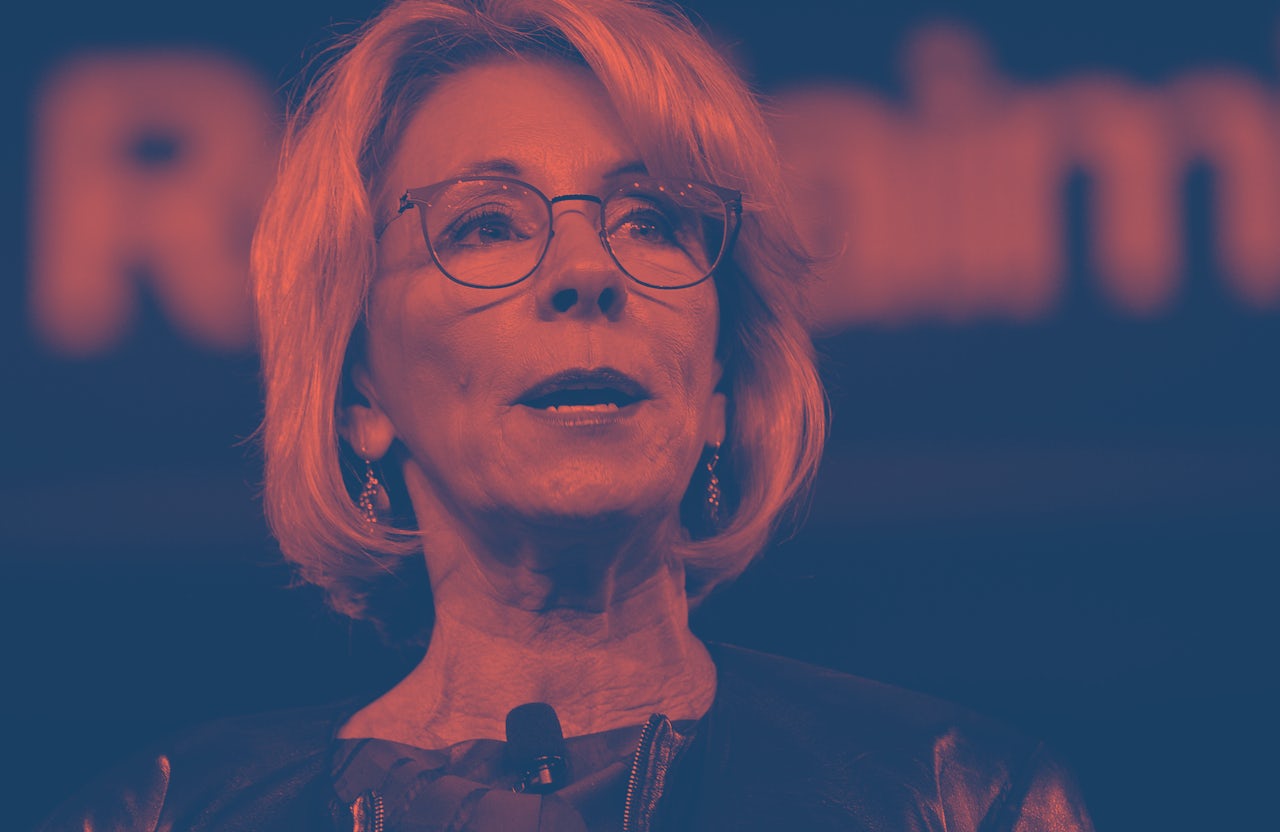The new secretary of education stepped to the mic at the Conservative Political Action Conference on Thursday, and warmed up the crowd with a joke that played well in that particular room.
“I’m Betsy DeVos,” the secretary, who arrived at the job with no experience in the public school system, said. “You may have heard some of the wonderful things the mainstream media has called me lately. I, however, pride myself on being called a mother, a grandmother, a life partner, and perhaps the first person to tell Bernie Sanders to his face that there’s no such thing as a free lunch.”
Hahaha, Bernie Sanders. Whatever on that. It’s a speech at CPAC, where he’s an obvious target, and this was an apparent reference to DeVos’ back-and-forth with Sanders during her confirmation hearing last month. And maybe DeVos just didn’t consider the impact of the phrase “free lunch” in the context of her new job. But here’s the problem: She’s now in charge of a school system that serves free and subsidized lunches to more than 30 million students every day. While the Department of Agriculture actually pays for this program, DeVos’ tone-deaf joke made her appear oblivious to the fact that free school lunches are often the only thing that keep many low-income kids from going hungry.
According to government statistics, 15.8 million, or 12.5 percent, of U.S. households were “food insecure” in 2015, meaning they were unable to acquire enough food to meet the needs of all family members. Multiple studies have shown that hungry children struggle in school, with demonstrably lower math scores, and a greater likelihood of having to repeat a grade.
I spent three years teaching in a public middle and high school in Brooklyn, and saw this play out on a human level: If a kid eats, he or she has a chance to be engaged in class. If a kid is hungry, he or she will probably stumble through the day, a weak and grumpy zombie, head down on desk, no chance to learn.
But as LeVar Burton would say, don’t take my word for it. Here are some facts that might help the billionaire secretary realize that there is, in fact, such a thing as a free lunch, and it’s important.
- The National School Lunch Act came into being in 1946, when it was signed by President Harry Truman. Under the law, the federal government reimburses schools for students who qualify for the program. Through 2012, the program had served more than 224 billion lunches.
- Children from families with incomes below 130 percent of the poverty level — an annual income of $30,615 for a family of four — are eligible for free lunches. Children with incomes between 130 percent and 185 percent of the poverty level — $30,615 to $43,568 for a family of four — are eligible for reduced-price meals, for which students can be charged no more than 40 cents.
- According to government statistics, the program serves more than 100,000 schools and feeds more 30 million American children each day.
- The program cost $11.6 billion in fiscal year 2012, a pittance compared to many other expenditures. That same year, the U.S. devoted $781 billion to Social Security, $676 billion to defense spending, and $86 billion to transportation spending.
- The program provides school staff and students with nutrition education, in an effort to promote health and combat child obesity.
You get the idea. Free lunches are important, and DeVos should have found another zinger.
